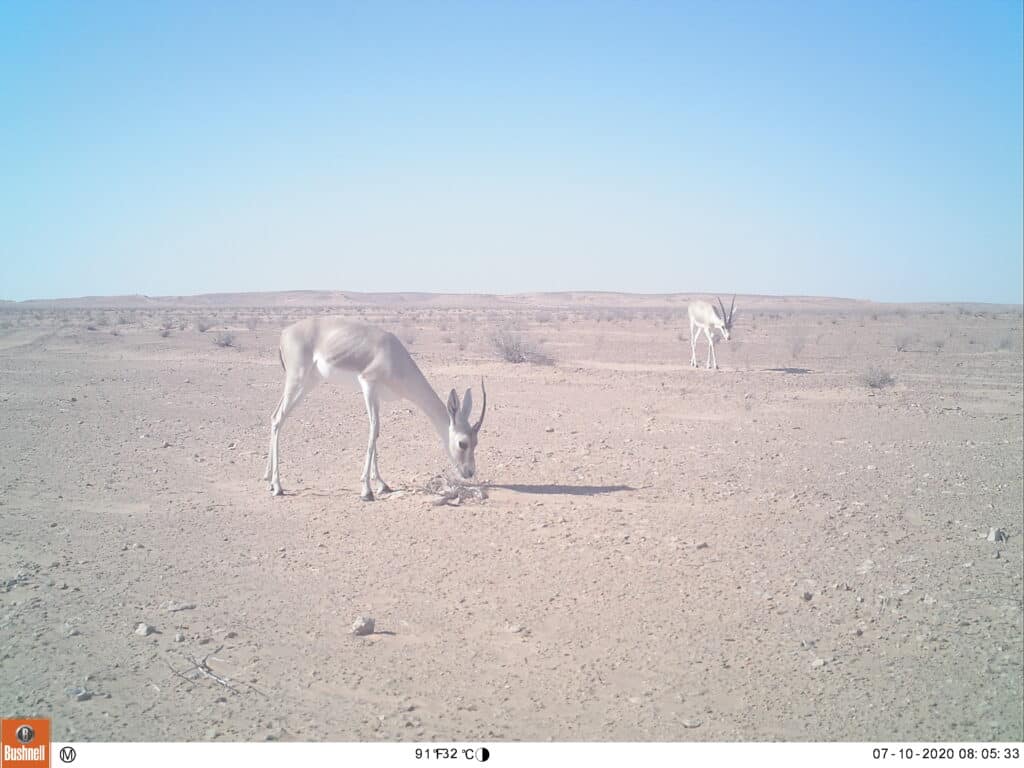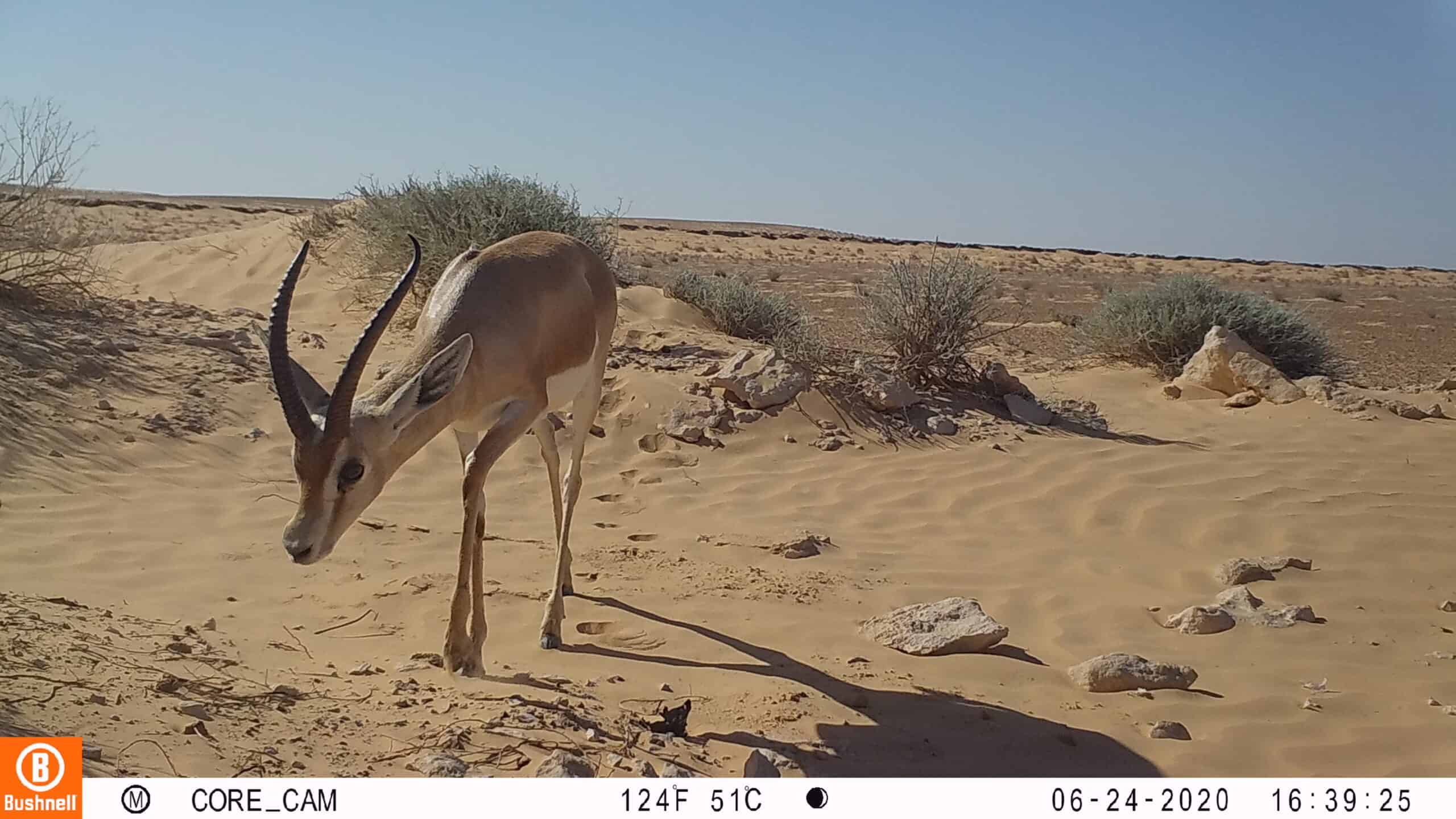Share this article
JWM: Saharan gazelles need large tracts of protected land
Prolonged drought may be affecting these desert-dwelling gazelles
Despite the legendary aridness of the Sahara Desert and the ecosystems that surround it, gazelles manage to eke out an existence, surviving on plants that, like them, subsist on the region’s minimal rainfall. But long-term drought and escalated human activities have further parched the region, where only a few imperiled gazelle populations hang on in Tunisia’s arid habitats.
New research now shows that the dorcas gazelle (Gazella dorcas) and slender-horned gazelle (G. leptoceros) likely need larger swaths of protected land to survive in these areas—especially in times of drought.
“Our work in Tunisia is part of our broader direction aiming at restoring a functional Saharan ecosystem where wildlife and people can coexist harmoniously,” said Mohamed Khalil Meliane, a wildlife biologist with Marwell Wildlife, a U.K.-based charity that also works in Africa and Asia. “The gazelles serve as a flagship species, drawing attention to the importance of protecting and conserving the entire ecosystem.”
Slender-horned gazelles are categorized as endangered by the International Union for Conservation of Nature while the dorcas gazelles are classified as vulnerable. Both species are adapted to do well in arid landscapes. Dorcas gazelles are more generalist in their habitat selection and expand further north into arid land, while slender-horned gazelles specialize in sandy dune ecosystems.

In a study published recently in the Journal of Wildlife Management, Meliane and his colleagues used trail cameras to survey the gazelles found in a fenced section of Jbil National Park in southern Tunisia from April 2019 to October 2021. They carefully analyzed the photos, identifying individual gazelles by the unique shape of their horns.
“We were pleased that we found individuals from both species cohabiting in the park,” Meliane said.
But there weren’t many. They only identified one pair of slender-horned gazelles and eight dorcas gazelles inside the fenced area, indicating “that the population was quite small,” Meliane said.
Pairs of both gazelle species used roughly 2,000 hectares of habitat in the fenced area. This suggests the fenced area may not be large enough to protect many of either species, he said—especially given the drought, which can leave the gazelles traveling farther in search of resources.
While Jbil National Park is around 150,000 hectares, only about 7,700 hectares are fenced in an effort to keep poachers out and the animals in. Gazelles are poached for sport in parts of the Sahara, “It’s a social phenomenon,” Meliane said.
The gazelles serve as a flagship species, drawing attention to the importance of protecting and conserving the entire ecosystem.”
Mohamed Khalil Meliane
Fences in the area offer wildlife managers advantages in terms of understanding the ecology and requirements of these species. It also provides a managed source population. Wild gazelles can get in and out of the protected area when dunes swallow parts of the fence. These fenced areas provide protection from poachers for a more genetically diverse source population that currently only exist outside the fence. But the desert’s shifting dunes can destroy any kind of infrastructure, he said making it hard to provide the gazelle with both protection and resources. Expanding the fenced area would only be a temporary solution.
In the future, Meliane said that wildlife managers are hoping to create a safe corridor connecting Jbil with another protected area of the Sahara in southern Tunisia. Ideally, this would be safeguarded by the local communities and other partners.
“Gazelles are certainly fascinating animals, capable of dealing with rough Saharan conditions and managing to survive under human pressure. Their uniqueness further highlights the importance of protecting them.,” Meliane said.
This article features research that was published in a TWS peer-reviewed journal. Individual online access to all TWS journal articles is a benefit of membership. Join TWS now to read the latest in wildlife research.
Header Image: A male dorcas gazelle is captured on trail camera in Jbil National Park in Tunisia. Credit: Mohamed Khalil Meliane and Amira Saidi/Marwell Wildlife








